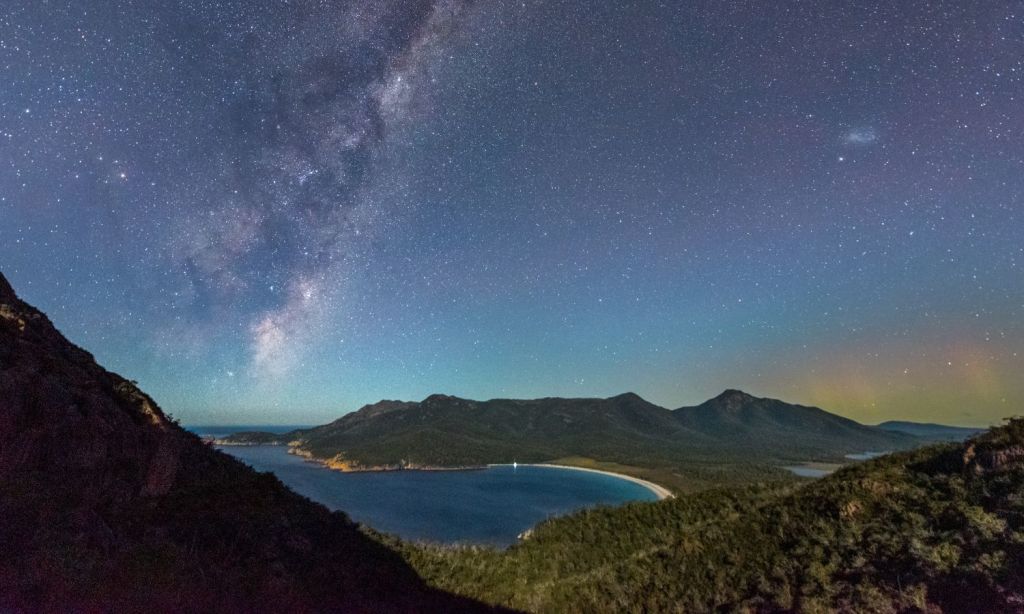In Australia, Tasmania is known for its excellent stargazing opportunities. London Bannister, President of Dark Sky Tasmania, says this is primarily because of two reasons.
Firstly, Bannister says, Tasmania has a geographical advantage with its southern location, offering views of certain celestial events that aren’t easily found elsewhere, including access to the Aurora Australis. Secondly, the island’s relatively small population, not to mention its isolated position, means it doesn’t have the light pollution issues other regions have.
“While population isn’t directly correlated to the spread of light pollution, it does tend to follow development with infrastructure like street lighting, signage, interior building lighting all contributing,” says Bannister. “Even air pollution can increase the spread of skyglow, the phenomena that block the stars.”

This leaves Tasmania relatively unaffected compared to most places in the world, with Tasmania having some of the cleanest air in the world, not to mention that large areas of the state are protected and relatively free from development.
As for when the best time of year for stargazing is in Tasmania, Bannister says generally, it’s the winter months, when the skies are clear and crisp, and darker for longer. If he did have to put a range on it, he’d suggest February to October would be the premium times, though, anytime you visit is a good time to go stargazing.
So, where are some of the best places in the state to see the stars? Everyone has their favourite places, says Bannister.
“Around Hobart, Taroona and Howrah, beaches are popular, and so is Kunanyi,” he says. “I personally love it up around the Central Highlands and the Tasman Peninsular. Bruny Island is a classic as you can generally position yourself to avoid the clouds somewhere there.”
To sum it up, the best place to go in Tasmania for stargazing is anywhere where there isn’t light pollution. Bannister suggests checking Radiance light trends (lightpollutionmap.info) in advance.

While you are welcome to stargaze on your own, maybe even arriving before sundown and setting up a picnic, for more of an in-depth experience, book a tour. The state offers everything from night walks, and astronomy tours, to astrophotography tours that can run over a few days.
For example, you can explore the dark skies and southern stars from Kunanyi / Mt Wellington with Walk on Kunanyi. You’ll immerse yourself in the southern night sky, starting with the moon and the solar system, and depending on the time of year, the planets. The tour will also give you the chance to see the Milky Way and into deep space.
The Astronomical Society of Tasmania also hosts a popular Public Night Sky Viewing Evenings at its observing site at Mount Pleasant. It’s an opportunity for people of all ages to see the many wonders of the southern night sky, peeking through telescopes. You’ll also get the chance to dabble in astrophotography, astrophysics and cosmology, with experts on hand who can share their knowledge.
Also, most accommodations in rural Tasmania have an outdoor fire pit or bathtub that lets people sit out under the ski, enjoying some amazing Tassie night skies — while still staying warm.
“Wherever you are, you usually aren’t far from an amazing night sky,” says Bannister. “All you have to do it head outside and look up.”
Related: 7 of the Most Exclusive Luxury Retreats on Tasmania’s East Coast
Related: Embrace Off-the-Grid Living in These (Ironically) Insta-Worthy Tasmanian Tiny Houses
Read more stories from The Latch and subscribe to our email newsletter.







